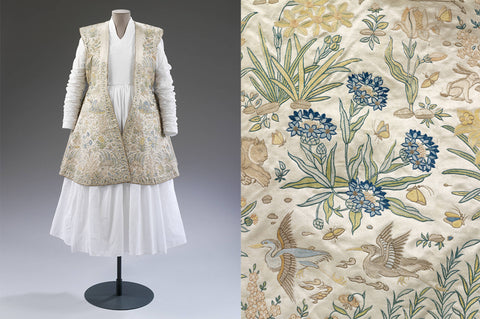When did this beautiful craft started?
I am sharing a brief and incomplete (as it would take way more than a post to explain it all) History of Quilting. I am focusing on the main events, explained in easy bullet points with some images as examples. At the end of the post you will find reference links and a fun video that explains it all in less than 5 minutes :)
Quilting and patchwork
Before I start with the chronological timeline of its origin, I need to start making a distinction between quilting and patchwork.
Quilting
It is the term given to the process of joining a minimum of three layers of fabric together either through stitching manually using a needle and thread, or mechanically with a sewing machine or specialised longarm quilting system.
Patchwork
Also called 'pieced word' is a form of needlework that involves sewing together pieces of fabric into a larger design. The larger design is usually based on repeating patterns built up with different fabric shapes.
When the piecing or patchwork stage is done, you end up with a quilt top that can then become a quilt after the quilting stage explained above.
A stitch somewhere in time
- Quilting can be traced back to Medieval times (think 'Game of Thrones' aesthetic) and there are examples found in Europe, India and The Far East from that time.
- Something insteresting is that the word 'quilt' is linked to the Latin word 'culcita', meaning a bolster or cushion, which seems to have first been used in England in the 12th and 13th centuries.
- The earliest examples of quilting were used to make bed covers and they were pass on as family heirlooms.
- One of the main surviving examples from this time is the 'Tristan Quilt'. It depicts scenes from the story of 'Tristan and Isolde', an influential romance and tragedy, made in Sicily during the second half of the 14th century.
Part of this quilt is displayed at the Victoria and Albert Museum in London.
- Quilts were also used to produce clothing that was light and warm. Soldiers used them under their armour for comfort (and maybe a sense of cosiness and protection during the battle?). One fine example of quilted clothing is an Indian hunting coat made in the 17th century, when the Mughal dynasty ruled South Asia.
This jacket is displayed at the Victoria and Albert Museum in London.

- Even though there is knowledge of quilts found in many other countries (like Australian possum skin cloaks, Aztec armour, Hawaiian Kapa inspired quilts, Auspicious Tibetan banners or Zimbabwe Weya Story cloths) the history of quilting in North America, from the 17th century onwards, is one of the richest in the world. There quilting became hugely popular thanks to settlers from England and The Netherlands.
- Apart from making quilts to stay warm, the settlers used quilting as a social interaction. Sewists of the time (yes, there were sewists already then, not sharing their quilts on Instagram just yet though, hehe) were part of so called 'quilting bees', social gatherings where women came together to socialize and quilt. These social gatherings, along with sewing at home, allowed the opportunity for quilting to be passed on as a generational skill.
- And example of what was made in one of these 'quilting bees' is this beautiful quilt created for the marriage of John Haldeman and Anna Reigart in 1846. It uses a pattern known as 'sunburst' or 'rising sun', popular for its symbolic associations with the dawning of a new day.
This quilt is displayed at the Victoria and Albert Museum in London.

-
Slaved women in North America began to quilt to make up for the sparse bedding that it was provided (if provided) by their enslavers. At the same time, quilt making became a creative otulet for them to find some sort of agency, identity and legacy during a time in American history when it was illegal for them to read and write.
- In many cases, the spaces where Black women got together to quilt focused on the creation of a single quilt. At these gatherings, they could experience some sort of freedom and a sense of belonging.
This quilt was made by Rosie Lee Tompkins, considered one of the greatest American textile designers.

- Modern quilting has again a big role in North America and it is gaining momentum everywhere else. Many dressmakers are finding joy in learning how to quilt and discovering how quilting has been modernised thanks to many amazing independent pattern designers. Fabric producers and shops are focusing as well on offering an incredibly wide arrange of beautiful fabrics catered to the modern maker.
- There are also many quilt associations, groups and guilds that join together to share their passion for quilting. Apart from meeting in person, much is done online, which makes it easier for this craft to reach even more quilters all over the world. Quilting fairs have also become hugely popular with Quilt Con in the US leading the way. The Festival of Quilts in the UK is another favourite of fans living in Europe.
I hope this brief history of how quilting started can help you know a bit more of the origin of this amazing craft and how rich its history is. If you want to know more, check the reference links below, go to the library to search for specialized books, visit a museum showcasing quilts if you are able to and find inspiration on social media following hashtags like #quiltersofinstagram.
You can also check the CocoWawa quilt patterns or book a virtual class with me!
Thanks for reading!
Ana
xxx
Reference links:Victoria and Albert Museum
Wikipedia History of Quilting
From rags to richness: Piecing the patchwork of American culture
The History of Quilting in Four Minutes
